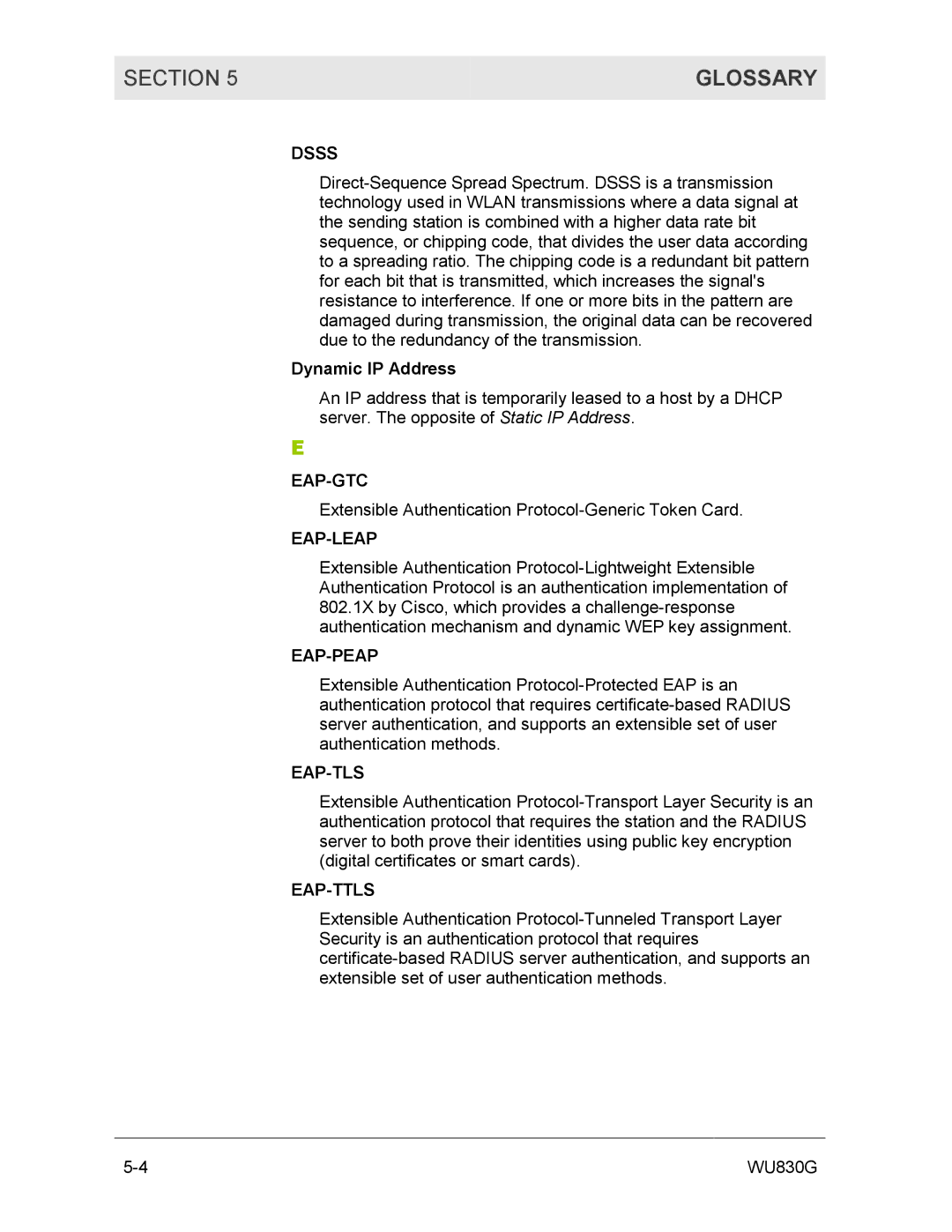DSSS
Direct-Sequence Spread Spectrum. DSSS is a transmission technology used in WLAN transmissions where a data signal at the sending station is combined with a higher data rate bit sequence, or chipping code, that divides the user data according to a spreading ratio. The chipping code is a redundant bit pattern for each bit that is transmitted, which increases the signal's resistance to interference. If one or more bits in the pattern are damaged during transmission, the original data can be recovered due to the redundancy of the transmission.
Dynamic IP Address
An IP address that is temporarily leased to a host by a DHCP server. The opposite of Static IP Address.
E
EAP-GTC
Extensible Authentication Protocol-Generic Token Card.
EAP-LEAP
Extensible Authentication Protocol-Lightweight Extensible Authentication Protocol is an authentication implementation of 802.1X by Cisco, which provides a challenge-response authentication mechanism and dynamic WEP key assignment.
EAP-PEAP
Extensible Authentication Protocol-Protected EAP is an authentication protocol that requires certificate-based RADIUS server authentication, and supports an extensible set of user authentication methods.
EAP-TLS
Extensible Authentication Protocol-Transport Layer Security is an authentication protocol that requires the station and the RADIUS server to both prove their identities using public key encryption (digital certificates or smart cards).
EAP-TTLS
Extensible Authentication Protocol-Tunneled Transport Layer Security is an authentication protocol that requires certificate-based RADIUS server authentication, and supports an extensible set of user authentication methods.
